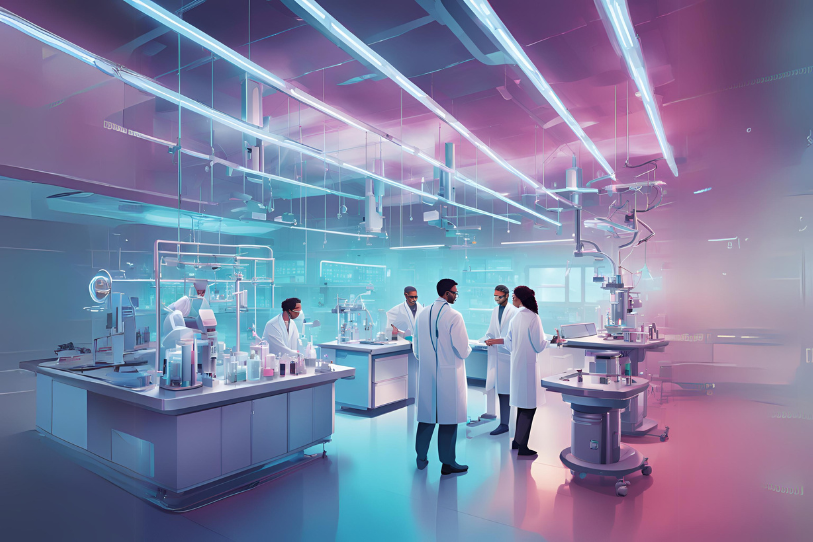
The Future of Life Sciences: Innovation in Single-Use Technology
Introduction
In recent years, single-use technology (SUT) has reshaped the landscape of life sciences, offering new avenues for efficiency, cost savings, and enhanced sterility in biopharmaceutical manufacturing. With advancements in materials and engineering, SUT is set to play an even greater role in future production workflows. From facilitating agile production to supporting personalized medicine, single-use technology is driving innovation across the life sciences industry. This article delves into the future of SUT, its current advantages, and what’s next for this transformative technology.
What is Single-Use Technology (SUT) in Life Sciences?
Single-use technology involves the use of disposable components and systems in biopharmaceutical manufacturing, including bags, filters, tubing, and bioreactors that are designed for a single production cycle. Unlike traditional stainless steel systems, which require rigorous cleaning and validation between batches, single-use systems are pre-sterilized and discarded after each use, reducing contamination risks and saving time.
Key Benefits of Single-Use Technology
- Enhanced Sterility and Safety: Single-use systems eliminate the risk of cross-contamination since each unit is used once and disposed of. This is particularly important for aseptic processes, where maintaining sterility is essential. Pre-sterilized single-use components minimize human error in cleaning and sterilization, which can otherwise lead to costly recalls or production halts.
- Cost Efficiency: Although SUT requires ongoing procurement of disposable components, it often results in lower overall costs by reducing labor, energy, and water usage associated with cleaning reusable systems. Additionally, SUT’s faster turnaround time allows facilities to increase their production throughput, making it highly cost-effective.
- Environmental Impact and Sustainability Initiatives: While disposable systems may seem less eco-friendly, innovations are underway to make SUT more sustainable. Advances in recycling programs and the use of biodegradable materials help mitigate environmental impact. Additionally, single-use technologies reduce water and chemical use required in cleaning traditional systems, providing an eco-friendly alternative in certain applications.
- Agility and Flexibility in Production: Single-use technology provides flexibility for facilities to scale up or down quickly, especially beneficial for personalized medicine and small-batch manufacturing. This flexibility allows facilities to pivot to different products or therapeutic areas with ease, supporting the rapid development of biopharmaceutical products such as vaccines, cell, and gene therapies.
Innovations Shaping the Future of SUT
As the demand for single-use systems grows, new advancements are enhancing their capabilities and sustainability:
- Advanced Bioreactors and Mixer Bags: Modern single-use bioreactors and mixer bags are engineered to support larger volumes and more complex bioprocessing applications, achieving higher cell densities for optimal cell growth and productivity.
- Improved Material Compatibility and Integrity: The latest single-use systems are constructed from advanced polymer materials that withstand varying pH levels and extreme temperatures, preventing leaching and protecting product quality.
- Automation and Data-Driven Monitoring: With IoT integration, single-use systems can provide real-time data on conditions like temperature and pressure, ensuring quality and consistency while reducing contamination risks.
- Recycling and Waste Reduction Initiatives: Companies are developing innovative recycling programs to repurpose used components, making SUT a more sustainable choice.
Future Applications of Single-Use Technology in Life Sciences
- Cell and Gene Therapy: Single-use systems are ideal for patient-specific manufacturing, allowing quick adaptation to specific batch needs.
- Vaccine Production: SUT enables fast production to meet high demands, crucial in vaccine development and distribution.
- Precision and Personalized Medicine: SUT’s scalability makes it suited for small-scale manufacturing processes in personalized medicine.
- Research and Development: Single-use systems support quick transitions between experiments, fostering innovation and exploration of new therapies.
Challenges and Considerations for the Future
While single-use technology offers numerous advantages, it’s not without challenges:
- Waste Management: The disposable nature of SUT generates waste, requiring more sustainable practices and materials.
- Material Compatibility: Ensuring compatibility with various substances remains a priority as processes become more complex.
- Cost of Transition: Switching to SUT can require a substantial initial investment, but long-term efficiency gains often offset this cost.
Conclusion: The Path Forward for Single-Use Technology
Single-use technology is revolutionizing the life sciences industry, supporting safe, efficient, and flexible biopharmaceutical manufacturing. As the demand for agile production processes and personalized medicine grows, the role of single-use systems will expand. With continued innovation, SUT will remain a key enabler of advancements in life sciences, contributing to safer and more effective treatments for patients worldwide. Embracing single-use technology is not just about staying current with industry trends; it’s about shaping a sustainable, efficient, and patient-centric future in life sciences.

